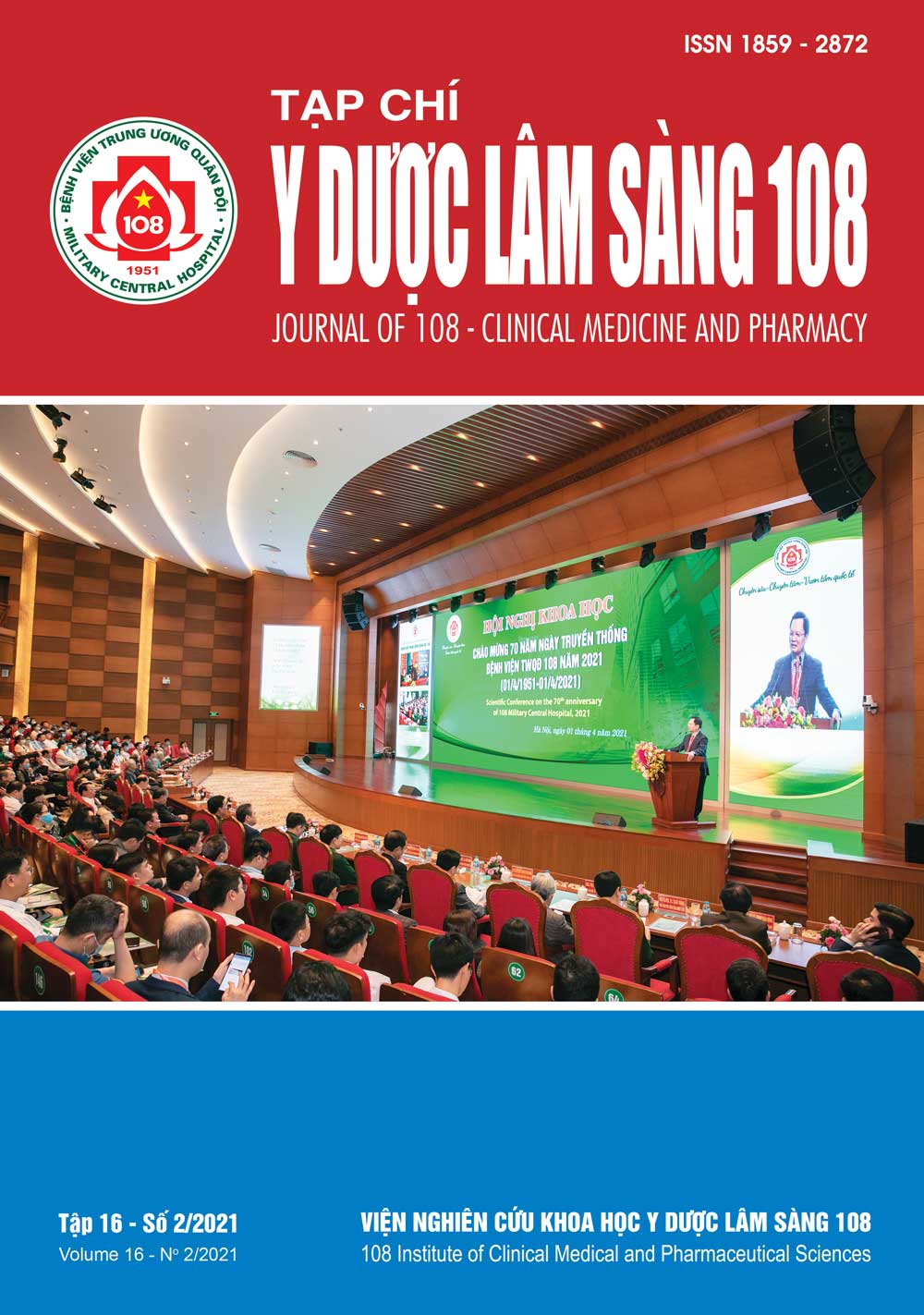Transfusion related acute lung injury (TRALI): A case of early diagnosis and successful management in ICU of 108 Military Central Hospital
Main Article Content
Keywords
Acute lung injury, transfusion related
Abstract
Transfusion related acute lung injury (TRALI) is a rare, fatal complication which is often overlooked in clinical practice. The diagnosis is primarily based on exclusion of other causes of acute lung damage. The clinical scenario is acute respiratory failure following blood transfusion, not caused by infection or heart failure. Treating TRALI includes: Mechanical ventilation, hemodynamic support, corticosteroids, and protection patient from possible multi-organ failure.
Article Details
References
1. Bux J (2005) Transfusion-related acute lung injury (TRALI): A serious adverse event of blood transfusion. Vox Sang 89(1): 1-10.
2. Bux J, Sachs UJ (2007) The pathogenesis of transfusion-related acute lung injury (TRALI). Br J Haematol 136(6): 788-799.
3. Chapman CE, Stainsby D, Jones H et al (2009) Ten years of hemovigilance reports of transfusion-related acute lung injury in the United Kingdom and the impact of preferential use of male donor plasma. Transfusion 49(3): 440-452.
4. Fung YL, Silliman CC (2009) The role of neutrophils in the pathogenesis of transfusion-related acute lung injury. Transfus Med Rev 23(4): 266-283.
5. Jutzi M, Levy G, Taleghani BM (2008) Swiss haemovigilance data and implementation of measures for the prevention of transfusion associated acute lung injury (TRALI). Transfus Med Hemother 35(2): 98-101.
6. Kleinman S, Caulfield T, Chan P et al (2004) Toward an understanding of transfusion-related acute lung injury: statement of a consensus panel. Transfusion 44(12): 1774-1789.
7. Kopko PM, Marshall CS, MacKenzie MR et al (2002) Transfusion-related acute lung injury: Report of a clinical look-back investigation. Jama 287(15): 1968-1971.
8. Nicolle AL, Chapman CE, Carter V et al (2004) Transfusion-related acute lung injury caused by two donors with anti-human leucocyte antigen class II antibodies: A look-back investigation. Transfus Med 14(3): 225-30.
9. Silliman CC, Boshkov LK, Mehdizadehkashi Z et al (2003) Transfusion-related acute lung injury: epidemiology and a prospective analysis of etiologic factors. Blood 101(2): 454-462.
10. Silliman CC, Kelher MR, Khan SY et al (2014) Experimental prestorage filtration removes antibodies and decreases lipids in RBC supernatants mitigating TRALI in vivo. Blood 123(22): 3488-3495.
11. Skeate RC, Eastlund T (2007) Distinguishing between transfusion related acute lung injury and transfusion associated circulatory overload. Curr Opin Hematol 14(6): 682-687.
12. Toy P, Hollis-Perry KM, Jun J et al (2004) Recipients of blood from a donor with multiple HLA antibodies: A lookback study of transfusion-related acute lung injury. Transfusion 44(12): 1683-1688.
13. Stein D, Beckers EA, Sintnicolaas K et al (2010) Transfusion-related acute lung injury reports in the Netherlands: An observational study. Transfusion 50(1): 213-220.
14. Vlaar AP, Binnekade JM, Prins D et al (2010) Risk factors and outcome of transfusion-related acute lung injury in the critically ill: A nested case-control study. Crit Care Med 38(3): 771-778.
15. Otrock ZK, Liu C, Grossman BJ (2017) Transfusion-related acute lung injury risk mitigation. An update. 112(8): 694-703.
2. Bux J, Sachs UJ (2007) The pathogenesis of transfusion-related acute lung injury (TRALI). Br J Haematol 136(6): 788-799.
3. Chapman CE, Stainsby D, Jones H et al (2009) Ten years of hemovigilance reports of transfusion-related acute lung injury in the United Kingdom and the impact of preferential use of male donor plasma. Transfusion 49(3): 440-452.
4. Fung YL, Silliman CC (2009) The role of neutrophils in the pathogenesis of transfusion-related acute lung injury. Transfus Med Rev 23(4): 266-283.
5. Jutzi M, Levy G, Taleghani BM (2008) Swiss haemovigilance data and implementation of measures for the prevention of transfusion associated acute lung injury (TRALI). Transfus Med Hemother 35(2): 98-101.
6. Kleinman S, Caulfield T, Chan P et al (2004) Toward an understanding of transfusion-related acute lung injury: statement of a consensus panel. Transfusion 44(12): 1774-1789.
7. Kopko PM, Marshall CS, MacKenzie MR et al (2002) Transfusion-related acute lung injury: Report of a clinical look-back investigation. Jama 287(15): 1968-1971.
8. Nicolle AL, Chapman CE, Carter V et al (2004) Transfusion-related acute lung injury caused by two donors with anti-human leucocyte antigen class II antibodies: A look-back investigation. Transfus Med 14(3): 225-30.
9. Silliman CC, Boshkov LK, Mehdizadehkashi Z et al (2003) Transfusion-related acute lung injury: epidemiology and a prospective analysis of etiologic factors. Blood 101(2): 454-462.
10. Silliman CC, Kelher MR, Khan SY et al (2014) Experimental prestorage filtration removes antibodies and decreases lipids in RBC supernatants mitigating TRALI in vivo. Blood 123(22): 3488-3495.
11. Skeate RC, Eastlund T (2007) Distinguishing between transfusion related acute lung injury and transfusion associated circulatory overload. Curr Opin Hematol 14(6): 682-687.
12. Toy P, Hollis-Perry KM, Jun J et al (2004) Recipients of blood from a donor with multiple HLA antibodies: A lookback study of transfusion-related acute lung injury. Transfusion 44(12): 1683-1688.
13. Stein D, Beckers EA, Sintnicolaas K et al (2010) Transfusion-related acute lung injury reports in the Netherlands: An observational study. Transfusion 50(1): 213-220.
14. Vlaar AP, Binnekade JM, Prins D et al (2010) Risk factors and outcome of transfusion-related acute lung injury in the critically ill: A nested case-control study. Crit Care Med 38(3): 771-778.
15. Otrock ZK, Liu C, Grossman BJ (2017) Transfusion-related acute lung injury risk mitigation. An update. 112(8): 694-703.
 ISSN: 1859 - 2872
ISSN: 1859 - 2872
